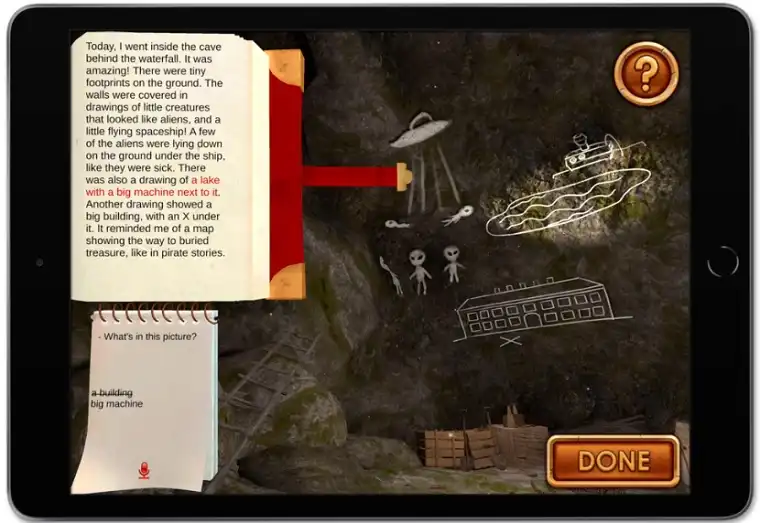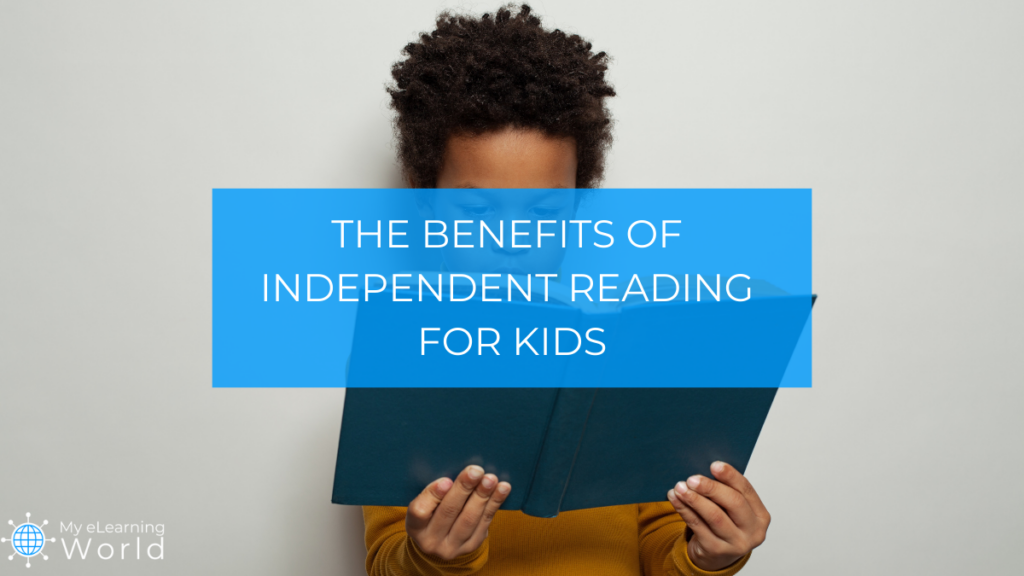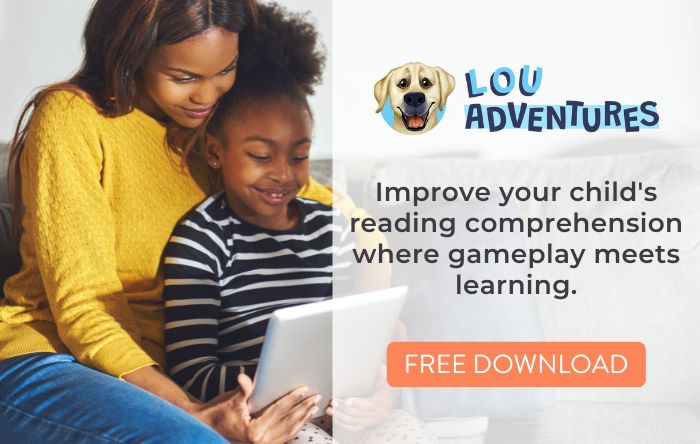Are you wondering about the benefits of independent reading for kids? Trying to figure out when it makes sense to let them lead the way and how to support them in their reading journey?
Anyone who’s been through school can probably remember being made to do a report on a book you didn’t particularly like.
Being assigned a text, whether it’s informational or fiction, can rob some of the enjoyment that stems from reading for pleasure.
When kids are given time to choose their own books and read independently, however, they’re able to fully immerse themselves in the joy of reading for its own sake.
Independent reading is exactly what it sounds like — time for your child to read a book of their choice without interruption.
Making time for independent reading is one of the most effective ways to help kids improve their comprehension, fluency, vocabulary, and critical thinking skills.
It also sets your child up to love reading.
Read on to learn more about the benefits of independent reading and the best ways to get your child started on a rewarding reading routine.
Disclosure: Some of the links in this article are affiliate links, meaning at no additional cost for you, we might get a commission if you click the link and purchase.
A Closer Look at the Benefits of Independent Reading
Independent reading, at its core, is a chance for your child to practice and develop his or her reading abilities.
Children who spend more time reading independently are likely to build stronger vocabularies and become better spellers, simply from being exposed to more text.
Independent readers tend to display a higher level of “reading stamina.” This means they’re able to focus on reading for longer stretches of time, as independent reading builds both attention span and imagination.
The more time a child spends reading, the more they are able to comprehend, as well.
Better comprehension not only adds to their enjoyment of the story, but it also sets kids up for success when they have to “read to learn” later down the road.
A child who’s able to deeply understand a text will be able to learn from it, unlike a child who gets through the words without actually absorbing their meaning.
Of course, independent reading can’t –and shouldn’t – take the place of meaningful reading instruction in the classroom.
Kids need teacher-led practice with decoding, phonics, and fluency to build the foundation required for independent reading.
Independent reading, meanwhile, should take place to supplement this important learning.
After all, as teachers often point out, the child who reads for 20 minutes per day at home is reading for 3,600 minutes a school year, or the equivalent of 60 entire school days.
The child who only reads for 5 minutes, meanwhile, will have only read for 12 days.
It’s easy to conclude which child will be a more confident, comprehensive, and enthusiastic reader!
Barriers to Successful Independent Reading
Clearly, independent reading comes with a lot of positive effects.
It can still be hard, however, to convince kids to plunk down with a book every afternoon when they get home from school.
Simply finding the time can be a big obstacle to independent reading.
Between sports practice, work schedules, homework for other classes, and family time, some parents might feel like there just aren’t enough minutes in the day.
Kids may struggle to pay attention while reading, too.
This could be because they’re tired, or just because they’d rather be playing with friends or mastering the next level of their favorite video game.
Some kids may even find reading stressful.
If they’ve struggled with it before, they may have decided that they “aren’t good readers” – and who wants to spend time doing something they’re not good at?
All of these factors can make establishing an independent reading routine feel like a big lift.
Thankfully, though, there are some fairly simple ways you can get things rolling… and get them reading.
Ways to Encourage Independent Reading
1. Set a routine
Practice makes perfect, and having an expected reading routine is one of the best ways to make sure independent reading actually happens every day.
Ideally, your child will be able to read in a comfortable spot (although not too comfortable… bed should be reserved for sleeping!) with good lighting and minimal distractions.
You can set a timer (educators generally agree that 20 minutes is a good standard), or have your child work towards a goal, like finishing a certain number of pages or chapters on their own.
If time is short, get creative! Independent reading can be part of breakfast every morning or the last thing before lights-out at night.
Kids can read in the car or while they wait for a sibling to finish up at sports practice.
The main thing is to carve out a part of each day to devote to reading and to stick with it.
When kids know what to expect, they can focus better on what they actually need to do… in this case, reading.
2. Model good habits
Make sure your child sees you reading, too.
Whether it’s a news article on your phone or the latest novel in your favorite series, seeing you read for pleasure helps your child understand that reading is a skill they’ll enjoy their whole lives, not just in third grade.
It’s also a good idea to talk about what you’re reading and ask your child questions.
Tell your child about how one part of the story confused you, or share with them what you found interesting in an interview you read.
Let your child do the same and retell what happened in their own book.
Verbally summarizing, critiquing, and predicting will help your child boost their comprehension and stay engaged with what they’re reading.
Conversations about books also cement the idea that reading is an important and interesting part of everyday life.
3. Find the right level
It’s almost impossible to stay interested in a reading text that’s way too hard to understand.
It’s just as easy to get distracted when we read things that are far too simple (as any parent yawning over the millionth rereading of a beloved board book can confirm).
Prevent this from happening to your child by making sure their independent reading books correspond to their appropriate reading level.
You can ask their teacher for on-level book recommendations, or have your child do the “five finger rule” with any book they’re considering.
This quick check involves having your child skim the first page of a book and put up a finger for every word they don’t know.
Two to three fingers generally indicates the book will be “just right,” or challenging without being over their heads.
Books that are too easy or too difficult can still be part of your child’s library, of course, but are better left as shared reads… not the reading your child does by themself.
4. Make reading fun
Perhaps most importantly, make independent reading an entertaining experience for your child!
Make sure that your child has books about something they’re interested in, for one thing. This can make a huge difference in focus and attention span.
Both in-person and e-Libraries have thousands of options to choose from, so encourage your child to look for books about whatever sport, animal, show, or hobby fascinates them.
Books don’t have to be the only thing your child reads independently, either. Instead, let your young reader explore some of the fun literacy apps and reading games available today.
Lou Adventures, for example, is a free reading app aimed at building literacy skills for kids in grades 2-4.
Kids follow Lou, a friendly talking dog, as they work to solve a mystery by reading chunks of text and answering comprehension questions.
The app encourages your child to read aloud and records their efforts, so you can play back their reading and easily monitor their accuracy.
Newer or more hesitant readers can also opt to have Lou read the passages out loud to them while they read along on the screen.
Your child will have fun finding clues and playing literacy-boosting games, where they’ll match synonyms, use new vocabulary words, and go back to the text to find evidence.
The app even includes a Parent Dashboard, so that you can see how well they’re reading and where they might be making mistakes.
Educational apps like Lou Adventures can help your child’s comprehension skills grow while providing some much-needed variety to their reading routine.
Spicing things up with fun books and immersive apps like Lou Adventures will help your child see reading in a positive light.
Check out our Lou Adventures review for a full look at the app or click here to try Lou Adventures for free.
 Lou Adventures: An Interactive Learning Story for Kids
Lou Adventures: An Interactive Learning Story for Kids
Lou Adventures is an interactive learning story for kids that helps them improve their reading skills through a fun, adventurous game.
5. Stick with it
Last but not least, don’t be tempted to throw independent reading aside if your child doesn’t love it right away.
Building a routine can take time, but the benefits are huge. Students who read independently are better spellers and have bigger vocabularies.
They read faster and with more accuracy.
They absorb deeper knowledge from texts and usually have longer attention spans.
Plus, these are the children who – in time – actually love to read.
Creating a routine, modeling good habits, finding “just right books,” and making reading fun with apps like Lou Adventures can all help get your child hooked on independent reading.
While it may not be easy at first, you can be sure that the rewards will be worth it.
Do you know any other benefits of independent reading that we didn’t list here? Have any great tips for getting kids to read on their own? We’d love to hear from you in the comments below!


